Amid the ash of Lahaina, aid and anger are spreading
A week after blowtorch winds brought the most horrific disaster in modern Hawaiian history, members of Maui’s working class have become do-it-yourself first responders and cul-de-sac commanders.
With everything from U-Haul trucks to borrowed boats to dugout canoes, hundreds of lifeguards, carpenters and bartenders have set up and stocked nearly a dozen pop-up relief centers around the scorched earth of Lahaina, mostly without the help of anyone in uniform. The outpouring has been so great that what started as a plea for fuel, ice and diapers has turned into a request for shipping containers to store it all.
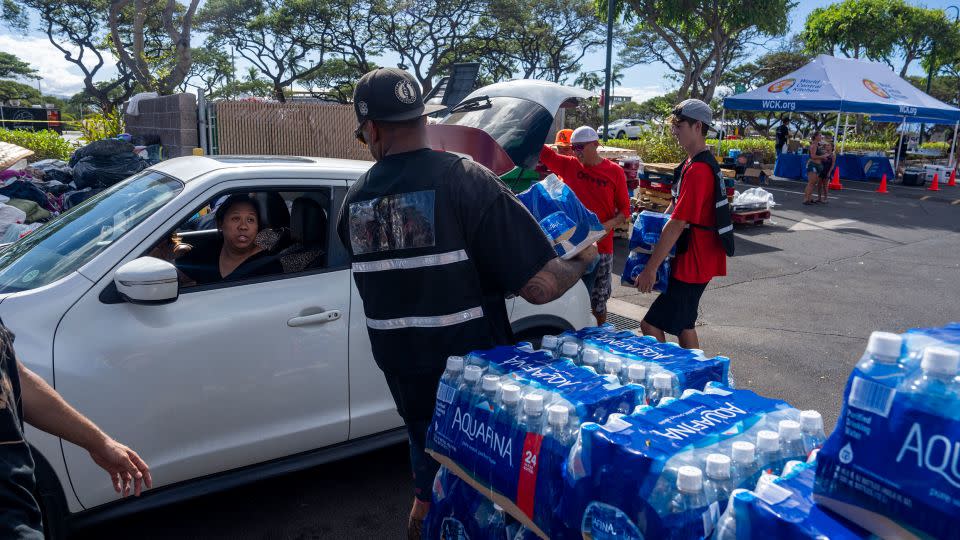
But between the disappointing official response, tourists who went snorkeling during the search for bodies and stories of real estate speculators hounding families in grief, Hawaii’s famous “aloha spirit” is being strained.
“Look around,” Keoki Naihe said on Sunday as he nodded at the impromptu encampment feeding a small crowd with organized efficiency at Pohaku Beach Park, questioning why there were no officials lending their support.
“They don’t give a sh*t about us,” Alika Peneku chimed in. The home of the self-employed contractor and mechanic was spared from the flames, but after giving it up to a displaced family with an infant, he’s been sleeping on a cot next to neighbors and strangers in one of the groups the community calls “pods.”
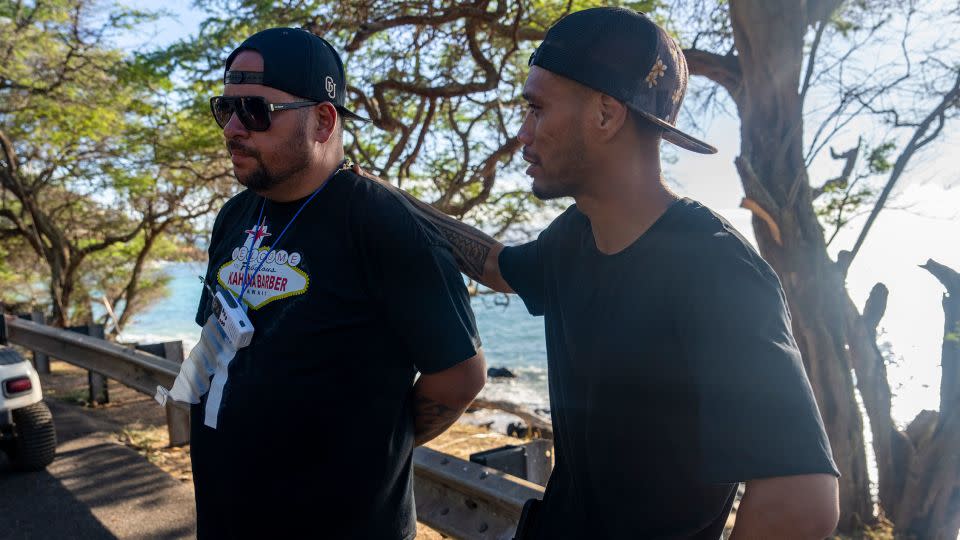
“Tourists have slept here,” he said. “We had three families sleep here the first night and we fed them just as if they were local. Why wouldn’t we? But nobody came to help us.”
He nodded at Charlie and Brittany Fleck, a Maui couple who spent the week crowdfunding on Facebook and passing cash out to survivors. CNN was there as they sweet-talked a caravan of relief supplies through red tape and checkpoints.
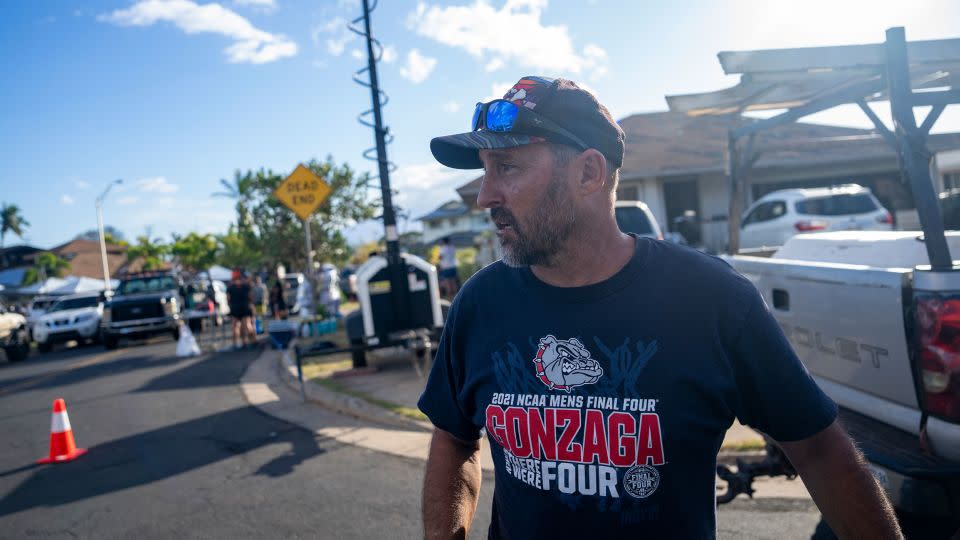
“They need more help than we can imagine,” Charlie Fleck said, voice choking with emotion. When they pulled their rented U-Haul full of pillows and medicine into Lahaina and saw the destruction for the first time, they wept.
“I can’t imagine being up here,” Charlie said, absorbing the destruction all around. “No power, no AC, just pain, just in the dark, you know?”
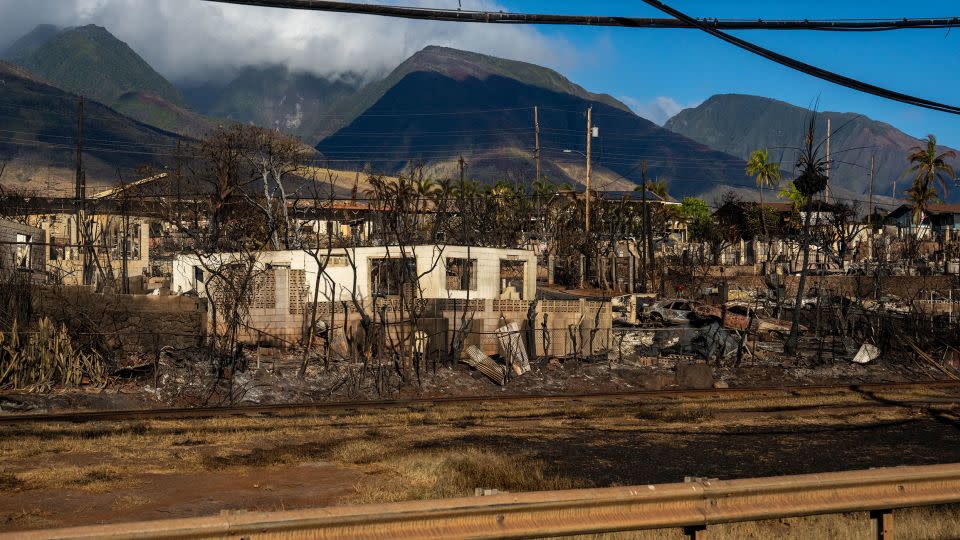
As the Flecks delivered cash to grateful families, Grace Hurt was running an improvised boat lift to supply pods like Peneku’s.
“Everyone who is a native Hawaiian and everyone who has built their homes here, we respect you,” she said, describing the tons of supplies her friends had delivered to cut-off communities. “We’re here for you. We are partnering with you. We will bring you back.”
But as she spoke, a tourist charter docked alongside and unloaded snorkelers from an excursion near Lahaina. “That is not pono,” she said, using the Hawaiian expression for righteous harmony, shaking her head in disgust.
While the Hawaii Visitors and Convention Bureau took to social media to “strongly discourage” visitors from vacationing on the western side of Maui. Peneku was more blunt.
“Leave,” he said. “Give us the chance to heal. If any one of those tourists’ homes burned down, they wouldn’t want anybody outside their home doing fun excursions. They would want time to mourn. They would want time to rebuild.”
While impromptu encampments pop up like the one at Pohaku Beach Park, recovery crews are going through what used to be homes, businesses and historic landmarks that burned to the ground when the wildfires began spreading erratically August 8. At least 99 people have been confirmed dead from the wildfires, and the number could double over the next 10 days, Hawaii Gov. Josh Green told CNN Monday.
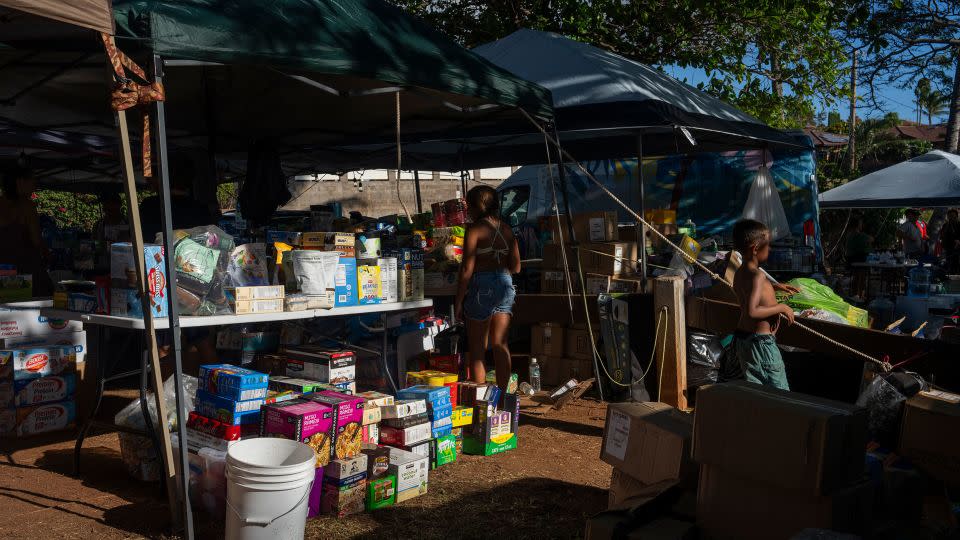
A few miles away from Pohaku Beach Park, amid another buzzing hive of survivors and volunteers, the Hall of Fame waterman leading them agreed that tourism may be massively important to the economy, but it can wait.
“(Officials) should not be telling us, ‘Oh, we want to open six months from now,’” Archie Kalepa told CNN from his yard piled with relief supplies. “The truth of the matter is, there is devastation. We are not going to be ready to allow people to see what we’re living through in six months.”
As Maui’s former Chief of Ocean Safety, the ninth generation Hawaiian once led dozens of lifeguards responsible for millions of visitors and pioneered the use of Jet Skis in ocean rescue. Now he’s trying to find a dust fence and face masks to protect his neighborhood from blowing toxic ash.
Kalepa said that, thanks to a valiant effort by neighbors and firefighters, only two of the 104 houses in his neighborhood burned and, with aloha to spare, he defended Maui County’s disaster management from mounting community criticism.
“I don’t think that’s fair,” he said. “Because this is a crime scene,” he added, indicating the charred remnants of his neighbor’s home. His biggest long-term worry is that Maui will be rebuilt without his ohana, or extended family, as they are priced out of their native paradise.
“One of the struggles we will see in this community, is the big land buyers are going to buy us out. And you know what happens if that happens? We’re gone. The people who lived here a very, very long time are going to get offers to leave. We need to find solutions to guarantee that they don’t have to come back to ground zero and pay for building their homes from the bottom up.”
FEMA Administrator Deanne Criswell told CNN after a weekend tour of Lahaina’s ruins that the agency has “a limited amount of funding that can help support some repairs to homes but as we see here, there is no repairing some of these homes.”
“So if they don’t have enough insurance, they have a little bit of funding from FEMA,” Criswell said. “We can also work with our partners like the Small Business Administration, who can do small home loans for up to $500,000.”
But in a playground of billionaires and skyrocketing home prices, there’s concern that won’t be enough for some families to rebuild and stay.
“A friend already got a call from someone wanting to buy their property,” Naihe said at the beach encampment. Similar stories on social media have raised as much scorn as the insensitive snorkelers.
“We’ve already been priced out of a lot of these homes and had three to four families working multiple jobs just to stay,” Peneku said, shaking his head. “So now I can see how the pressure is probably at the breaking point but – do not sell your property,” he implored his working-class neighbors. “Do not run away. Please. Just hang on as long as you can,” he said with a sigh and shrugged.
“It’s hard to be a Hawaiian in Hawaii.”
For more CNN news and newsletters create an account at CNN.com

